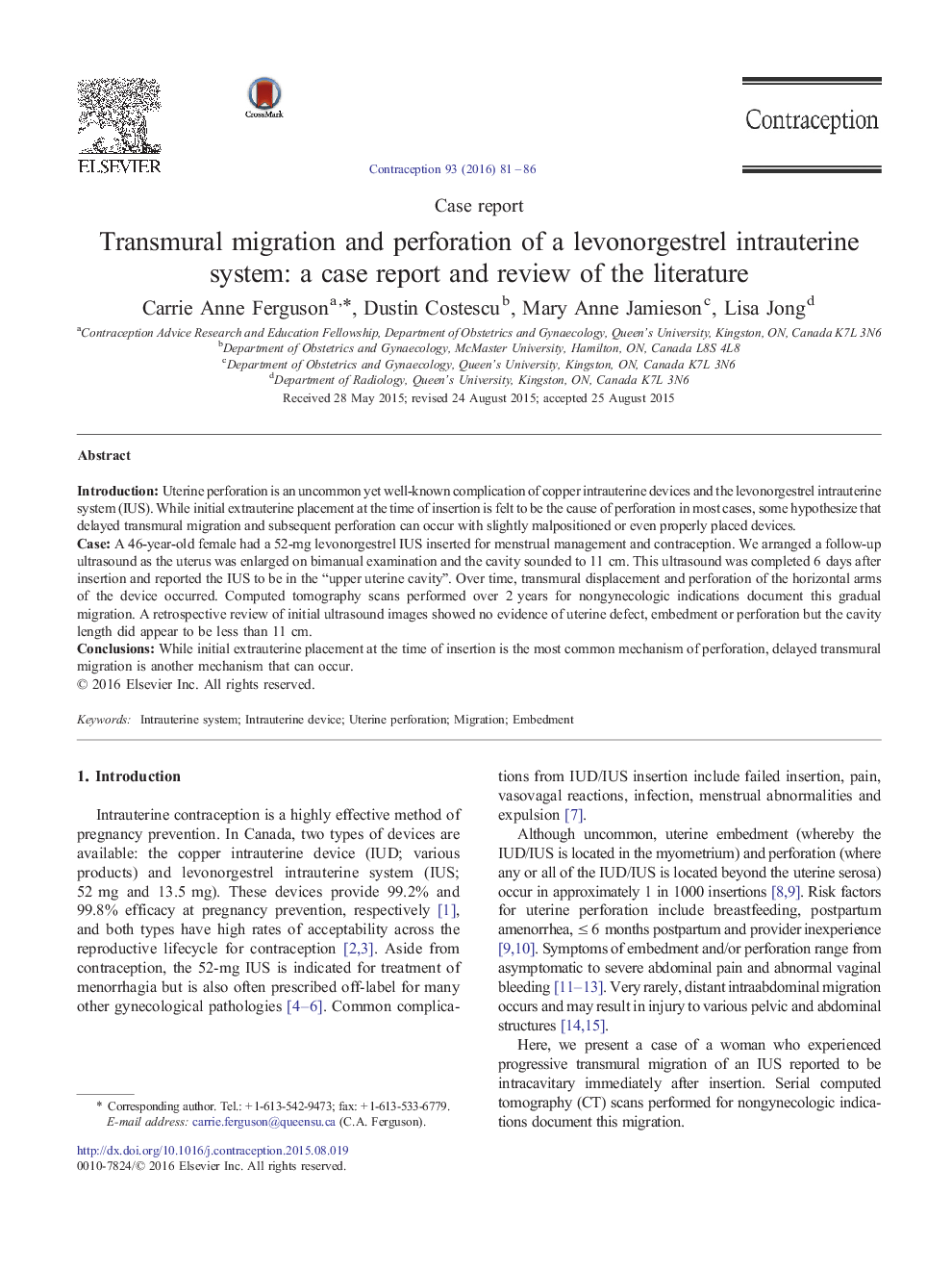| Article ID | Journal | Published Year | Pages | File Type |
|---|---|---|---|---|
| 6170663 | Contraception | 2016 | 6 Pages |
IntroductionUterine perforation is an uncommon yet well-known complication of copper intrauterine devices and the levonorgestrel intrauterine system (IUS). While initial extrauterine placement at the time of insertion is felt to be the cause of perforation in most cases, some hypothesize that delayed transmural migration and subsequent perforation can occur with slightly malpositioned or even properly placed devices.CaseA 46-year-old female had a 52-mg levonorgestrel IUS inserted for menstrual management and contraception. We arranged a follow-up ultrasound as the uterus was enlarged on bimanual examination and the cavity sounded to 11Â cm. This ultrasound was completed 6Â days after insertion and reported the IUS to be in the “upper uterine cavity”. Over time, transmural displacement and perforation of the horizontal arms of the device occurred. Computed tomography scans performed over 2Â years for nongynecologic indications document this gradual migration. A retrospective review of initial ultrasound images showed no evidence of uterine defect, embedment or perforation but the cavity length did appear to be less than 11Â cm.ConclusionsWhile initial extrauterine placement at the time of insertion is the most common mechanism of perforation, delayed transmural migration is another mechanism that can occur.
